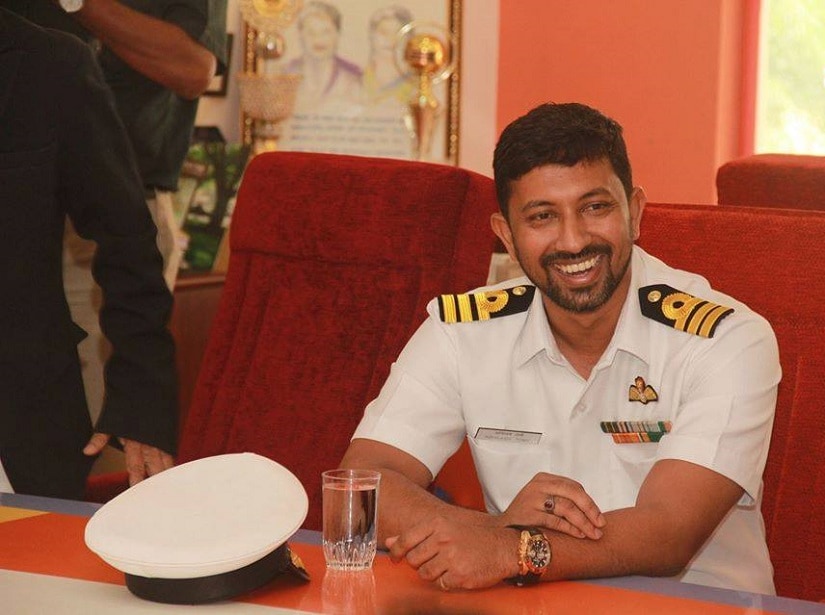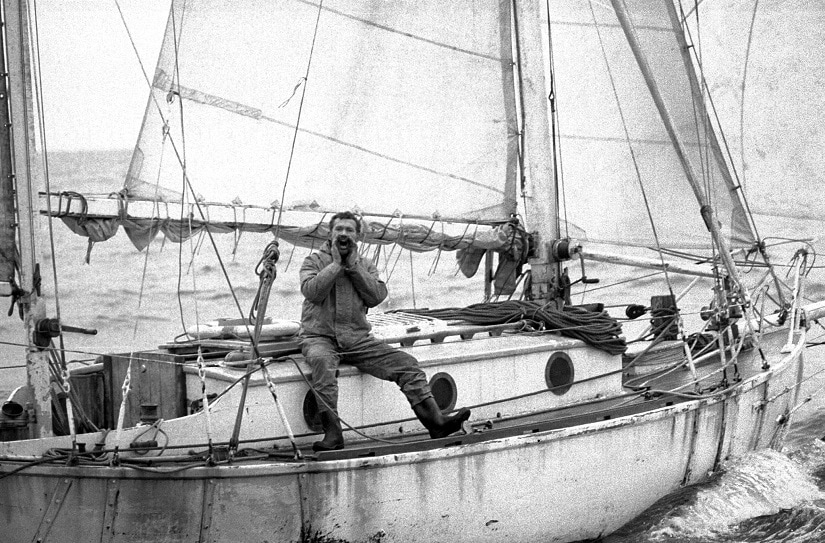Editor’s note: Indian sailor Abhilash Tomy was rescued on Monday after being stranded in the Southern Indian Ocean for three days. Firstpost had interviewed him in September 2017, before he set sail to participate in the Golden Globe Race. This article is based on our conversation with Tomy. Around 50 years ago, nine people signed up to sail across the world non-stop in non-mechanised yachts in a bid to win a perilous contest. It was called the Golden Globe Race, and the winner was the only participant who could ever reach the finish line. To commemorate its golden jubilee, a second edition of the Golden Globe Race was flagged off on 30 June, 2018 from the same place that the last race was — Plymouth, United Kingdom. One of the participants was Commander Abhilash Tomy of the Indian Navy. “For a race of this magnitude, the preparation is seemingly endless, and it takes years,” said Tomy. His journey began not at the starting line, but rather with acquiring the right boat and finding a yard which could build it. [caption id=“attachment_4113831” align=“alignnone” width=“825”]  Abhilash Tomy. Image courtesy: Facebook[/caption] Tomy has circumnavigated the globe before, and except for the North Atlantic, he has sailed in those parts of the sea which are a part of the GGR’s route. Before setting sail, he said, “The primary concern is the magnitude of the sea which makes even the largest ship in the world look no bigger than a matchstick, and equally vulnerable. Top it with the fact that the boats are going to be as big (or as small) as a local fishing boat (32-36 feet) manned by a sailor for about ten months in absolute solitude, sailing around the world for over 30,000 nautical miles most of which would be in the Southern Oceans, and you will just about begin to get an idea of how tough it is going to be. The Everest was conquered in 1954 and the first man sailed around the world non-stop and solo in 1968. Ever since, we have had 6000 and more Everesters but less than a hundred have finished a solo and non-stop circumnavigation.” Five decades may have passed, but the rules of the race remain largely unchanged. Those who take part in the race must use only the technology that was available to Sir Robin Knox-Johnston, the winner of the first race, and this can be more crippling that it seems. Locating oneself without the help of a GPS device needs practice and “a good measure of guess work thrown in”. Not to mention weather predictions, which will not be as accurate as the ones derived using the latest software, as well as storing provisions and taking care of the boat itself, both of which deteriorate with time. Describing the Golden Globe Race, Tomy had said, “This race is going to be adventure in its rawest form. There is going to be just enough technology, just enough boat and the might of the ocean against you.” [caption id=“attachment_4113833” align=“alignnone” width=“825”]  Sir Robin Knox-Johnston, the winner of the first Golden Globe Race. Image from Facebook/@goldengloberace[/caption] One of the challenges of taking part in this race was the finances involved, said Tomy. He worked with sponsors and simultaneously sought to crowdfund the immediate requirements for the race using a Ketto campaign. Tomy was the only Indian, and only Asian to qualify for this race, and he acknowledged that it felt good to know this. But ahead of the race, he didn’t seem too bothered about the competition, and said that he would mostly be competing against himself. “This won’t be about being faster than someone else, but surviving longer that you could have ever imagined,” he had said. Tomy explained that sailing as a sport has changed considerably over the years, in terms of the opportunities and exposure afforded to those who wish to pursue it. “For a long time this was a sport which was mostly restricted to the military, possible due to the expenses involved, proximity to a large water body, and perhaps because it was never really well understood as a sport. Over the years, this situation seems to have changed a lot. We have a lot of private sailing clubs and training facilities opening up. People outside of the military have been buying boats of all sizes and sailing and racing them, not just in the country but abroad, too,” he says. Still, he said that there is a lot of catching up that India must do, and he predicted that this is achievable given that Indian coasts, combined with their moderate winds and the warm weather, provide good conditions for sailing.
Before setting sail, Abhilash Tomy said, “The primary concern is the magnitude of the sea which makes even the largest ship look no bigger than a matchstick.
Advertisement
End of Article


)

)
)
)
)
)
)
)
)



